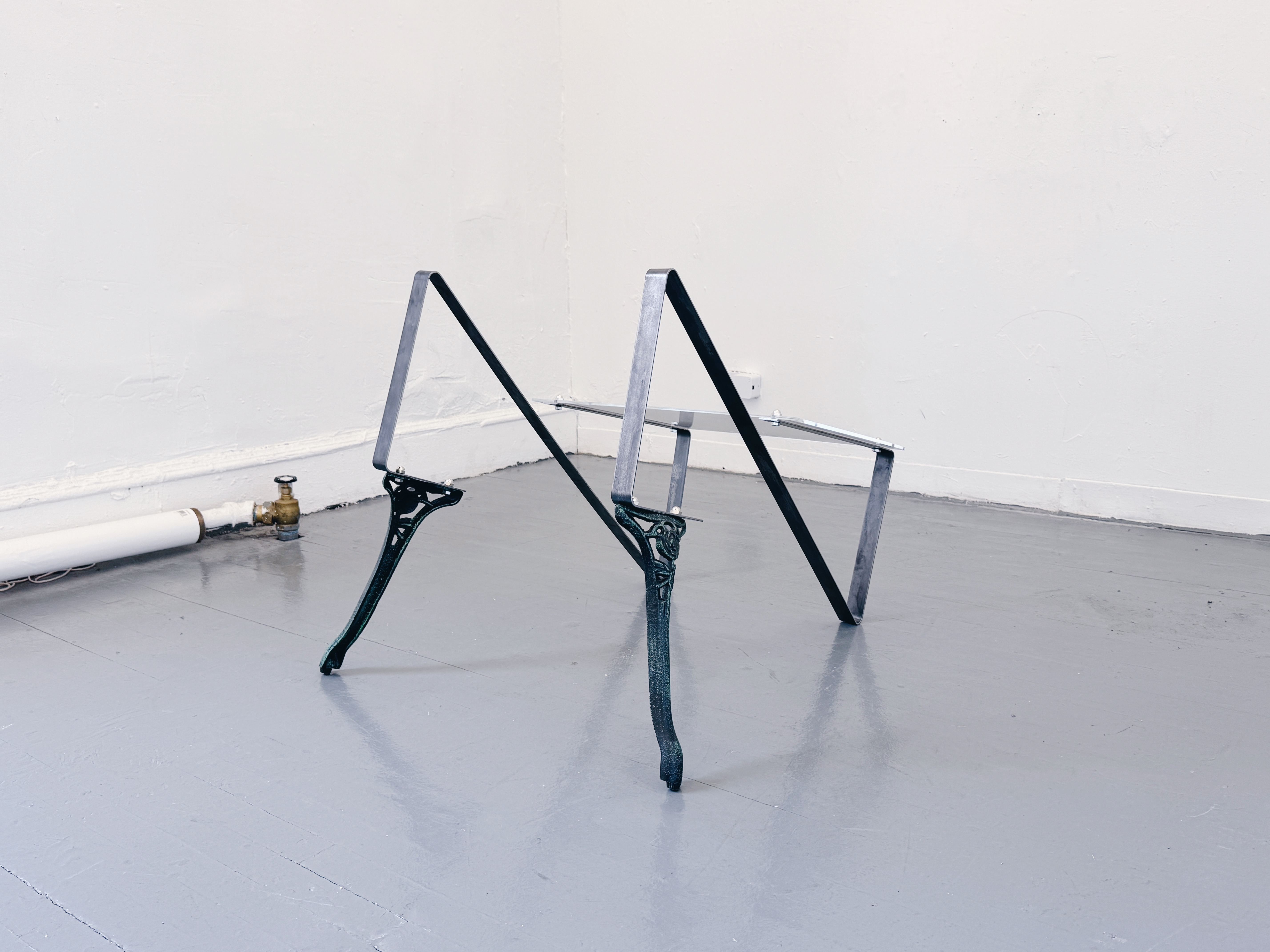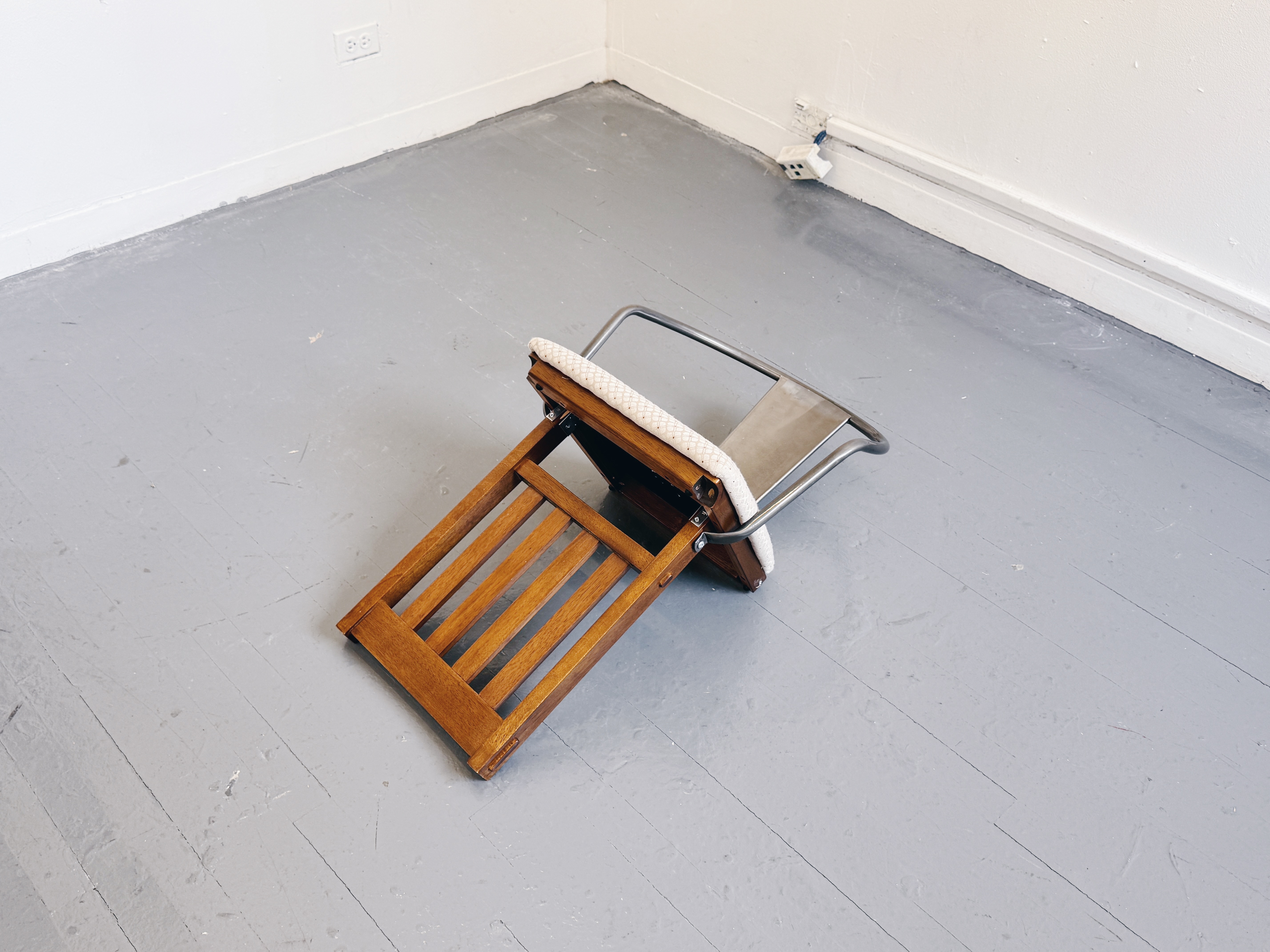home /
info /
cv
 Spread, 2025. Plexiglass, steel, found painted bronze, and hardwares.
Spread, 2025. Plexiglass, steel, found painted bronze, and hardwares.
 Kneel, 2025. Found chairs and hardwares.
Kneel, 2025. Found chairs and hardwares.
Without systems, life itself would be impossible. The first system we come to know is the body, which is an oddly precise, self-regulating structure that enables us to survive, move, and perceive the world. Through this foundational system, we not only sustain life but also gain access to another early and essential system: language.
As systems grow more complex architecturally, technologically, or culturally, they begin to displace bodies, identities, and environments in subtle but profound ways. These displacements are often unacknowledged, embedded within layers of design, regulation, or infrastructure that appear neutral or natural. A chair dictates posture. A passport defines belonging. A city plan determines who gets to move freely and who remains confined. Over time, systems not only organize life but overwrite it. What seems like order has become a quiet removal of alternative ways of living, of bodies that do not conform, or of landscapes deemed inefficient.
Displacement, in this sense, is not always visible or violent. It is systemic, slow, and structural.
The reason why these systems overwrite our lives is rooted in the urge to control. Bodily systems regulate our health, language systems shape how we express ourselves, and cultural systems dictate how we react and behave. Everything is governed by control, and that’s the logic of systems.
Instead of destroying the system, what if we play by its rules—and find the bugs hidden within them? What if, by following the system, we create a “failure” from within: a misassembled structure, an unstable presence inside a controlled space? A quiet disruption. A glitch. Something that makes the system wobble and slip.
Without systems, life itself would be impossible. The first system we come to know is the body, which is an oddly precise, self-regulating structure that enables us to survive, move, and perceive the world. Through this foundational system, we not only sustain life but also gain access to another early and essential system: language.
As systems grow more complex architecturally, technologically, or culturally, they begin to displace bodies, identities, and environments in subtle but profound ways. These displacements are often unacknowledged, embedded within layers of design, regulation, or infrastructure that appear neutral or natural. A chair dictates posture. A passport defines belonging. A city plan determines who gets to move freely and who remains confined. Over time, systems not only organize life but overwrite it. What seems like order has become a quiet removal of alternative ways of living, of bodies that do not conform, or of landscapes deemed inefficient.
Displacement, in this sense, is not always visible or violent. It is systemic, slow, and structural.
The reason why these systems overwrite our lives is rooted in the urge to control. Bodily systems regulate our health, language systems shape how we express ourselves, and cultural systems dictate how we react and behave. Everything is governed by control, and that’s the logic of systems.
Instead of destroying the system, what if we play by its rules—and find the bugs hidden within them? What if, by following the system, we create a “failure” from within: a misassembled structure, an unstable presence inside a controlled space? A quiet disruption. A glitch. Something that makes the system wobble and slip.